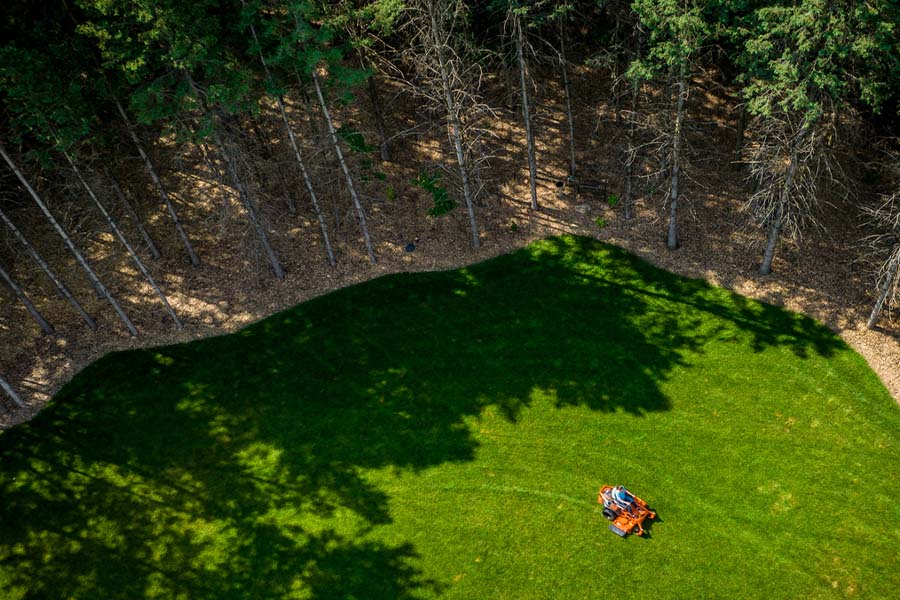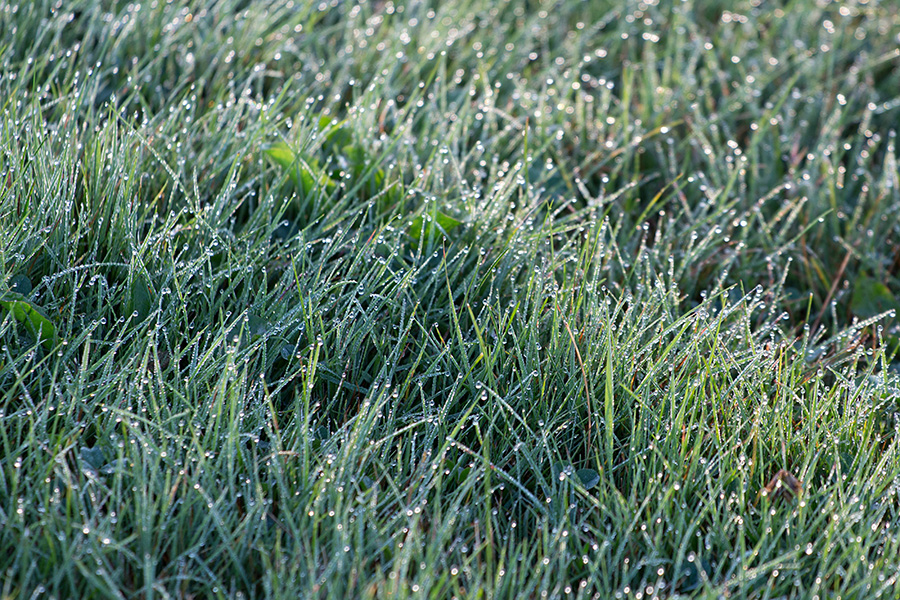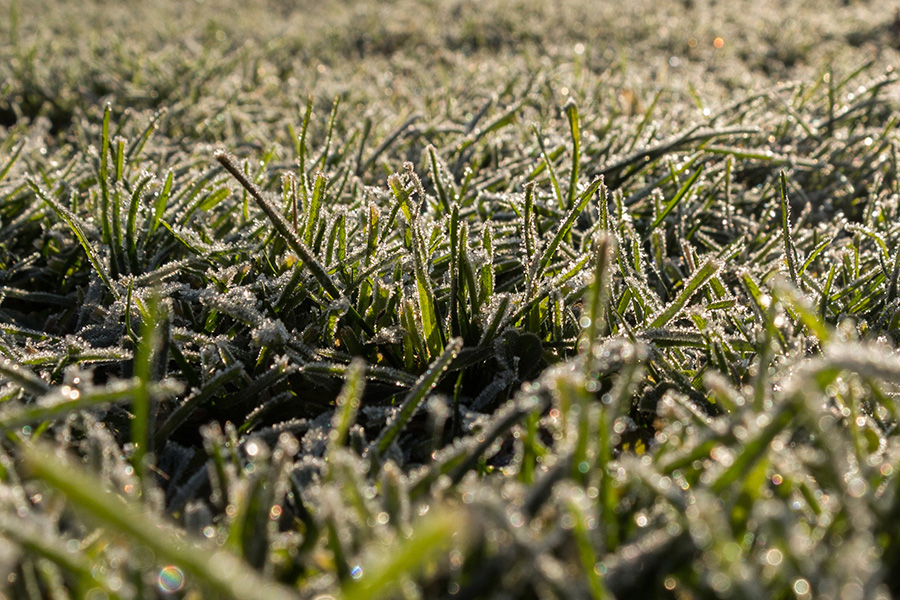Tips for Mowing Your Lawn During the Winter
12/3/2019 6:00:00 AM
It's important to take care of your lawn during the winter months for a lush and healthy lawn come spring. Grass may grow slower or go completely dormant in colder temperatures, but lawn care doesn't completely disappear in the winter. In certain areas, the grass is still alive and absorbing nutrients that are stored and used in spring. Maintaining a healthy lawn during the winter will also make things easier by minimizing the onset of diseases or pests once things warm up. To ensure a healthy lawn year-round, you'll want to address the following steps.

1. How long should my grass be during the winter?
Grass height should vary based on the season as well as the type of grass. Warm season grasses are kept shorter compared to cold season grasses. During winter, a warm season grass length should be kept at 1.5 to 2 inches tall, where cold season grass lengths can be kept closer to 2.5 inches tall.

Do you know your grass type? Read our post from earlier this year that describes the growing areas, characteristics and care instructions for the most common grass types, some of which are listed below:
Warm Season Grasses
- Bermuda Grass
- Bahia Grass
- St. Augustine Grass
- Centipede Grass
- Zoysia Grass
- Carpet Grass
- Buffalo Grass
Cold Season Grasses
- Kentucky Blue Grass
- Creeping Bent Grass
- Perennial Ryegrass
- Creeping Red Fescue Grass
Why grass shouldn't be too tall in the winter
For whatever grass type grows in your yard, avoid letting that grass grow over three inches during cold months. If grass is too tall, it will wilt, restricting airflow and causing it to collect moisture which can lead to fungal diseases. Long grass can also attract mice and other unwanted critters looking for warm places to stay, and these unwelcome visitors can damage your yard.
Why grass shouldn't be too short in the winter
Cutting grass too short can also affect the health of your lawn. If grass is too short, it has a harder time absorbing sunlight and nutrients. This causes the grass to turn yellow or brown in appearance and will make it spend most of the spring trying to work its way back to a healthy green color.
It's important to never cut more than one-third of the grass blade at a time. This means that if your lawn is three inches tall, only one inch should be cut. If your lawn ends up getting longer than you'd like, cut it to the desired length gradually by mowing more frequently, while still remembering to cut off no more than a third with any one mowing.
2. How often should I mow my lawn during the winter?
The good news is that winter lawn mowing is much less frequent than at peak times of the year. Instead of mowing your lawn once a week like you're used to during the summer, you can cut back to once every 3 to 4 weeks, depending on where you live. Since grass grows slower when temperatures drop to 50 or 40 degrees Fahrenheit, grass doesn't grow at the rate it does when there's ample warmth, water and sunshine, meaning there's no need to cut it every week. If the weather gets too cold, the grass may completely stop growing, eliminating your need to mow it altogether.
3. Only Mow When the Grass is Dry
Mowing less is great for your spare time budget, but the tricky part is finding a good time to mow because the weather usually isn't on your side. Whenever you find time in-between messy weather, make sure the grass is dry before mowing. Cutting wet grass can damage the roots and the weight of the water can make the grass wilt, resulting in an uneven cut.
That's not just with rainy days, either. Pay attention to snow, ice and even morning frost. A few cold frosts will cause warm season grass to go dormant. However, cool season grass is more resilient and continues to grow (slowly), requiring the need for maintenance. Either way, avoid mowing too early in the morning when frost is still present from an overnight freeze, keeping both your lawn and your neighbors happy.
4. Avoid Walking on Frozen Grass
It's OK to walk on grass during the warm summer days since it's flexible and supple, but cold weather doesn't offer that same luxury. Grass becomes more brittle and fragile in colder temperatures, causing grass blades to be damaged more easily. The grass will eventually recover, but it takes time to heal. So, minimize foot traffic across your lawn by keeping sidewalks, walkways, and driveways clean. Having a clear path to and from your house encourages visitors to avoid walking on the grass.

5. Keep Your Lawn Clean
Keep your lawn clean by removing leaves, branches and other organic matter. Leaving organic matter on your lawn can lead to the growth of bacteria or fungus.
If you are unable to rake the leaves before the first frost, use a leaf blower to avoid damaging your brittle grass with the rake. If the weather stays favorable, install a grass bagger or a mulching kit to your zero turn lawn mower or lawn tractor and mow over the leaves. Bagging saves you loads of time over raking, and mulching minces organic yard material and leaves into super-fine pieces that break down easily and return usable nutrients back to a lawn. Just don't bite off more than your yard can chew. If you have too many leaves covering your grass, bag instead of mulch. If you mulching them, you risk smothering your yard in mulched debris.
Click here to learn more about the benefits of mulching.
It's also important to remove summer toys or fall decorations from your lawn. These items can suffocate your grass by restricting its air supply, and they block sunlight.
6. Take Care of Your Lawn Mower
The slower lawn mowing months are the best time to fine-tune, service and maintain your lawn mower for the more vigorous work that begins when it warms up. This involves changing the oil, sharpening the blades, cleaning debris off the mower and from under the deck, replacing the engine air filter and maybe even replacing the spark plugs. Lawn mowers need regular maintenance to work effectively and efficiently year after year.
When it comes time to store your lawn mower during the offseason, keep it indoors to protect it from the harsh weather. Make sure to keep it somewhere dry and where it doesn't get too cold. Click here to learn more important details on how to correctly store your lawn mower for the season.